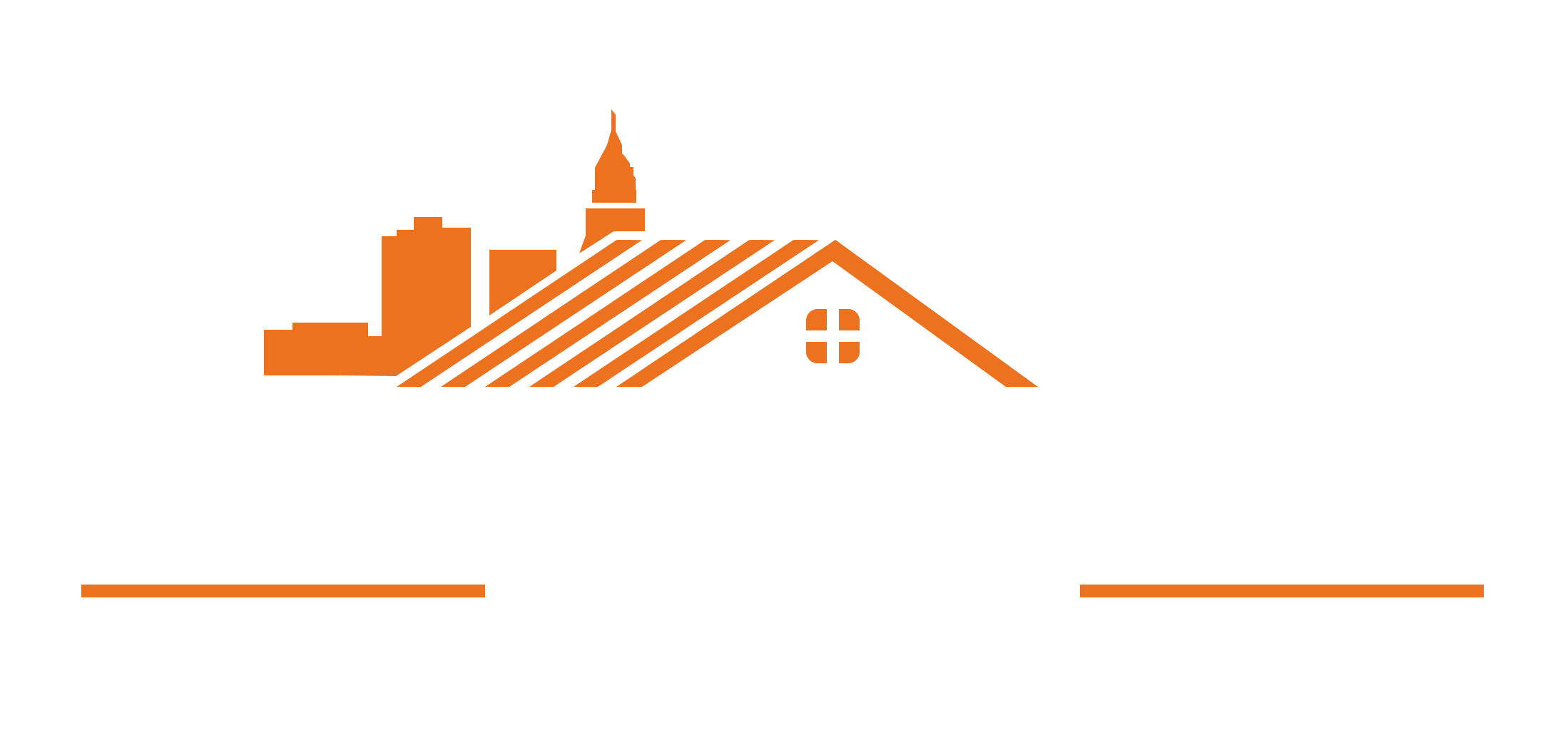
Garage Roof Repair 101: A Complete Homeowner’s Guide for Cincinnati
Reading Time : 10 Minutes
Whether you’re in Mount Lookout or Madisonville, one thing Cincinnati homeowners can agree on: a leaking garage roof is no small issue. It’s not just about water dripping from the ceiling it’s about protecting your tools, your car, and your peace of mind. And let’s be real most garages aren’t built like fortresses. One cracked shingle or failed flashing and you’ve got moisture sneaking in, setting the stage for rot, mold, and repairs that spiral out of control.
This guide is built for homeowners across the Queen City who want to understand their options, know what repairs cost, and decide when to call in a pro. Whether you’re a seasoned DIYer or just want to get a handle on what’s going wrong overhead, here’s everything you need to know.

Understanding Why Garage Roofs Leak in Cincinnati
Common Local Weather Hazards (Rain, Snow, Humidity)
Cincinnati’s weather has a reputation. Spring brings driving rains. Summers come packed with humidity. Winters? Think freeze-thaw cycles, snow buildup, and ice dams. All of these put strain on a roof especially one that’s already seen better days.
In neighborhoods like Norwood and Westwood, older garages often have roofs built with mid-grade shingles that are now 15–20 years old. When those shingles start to crack or curl, even light rain can find its way in. Add clogged gutters or ice damming in the winter, and you’ve got the perfect environment for water to seep in under your roof deck.
Aging Shingles, Sagging Valleys, and Rotting Decking
As garage roofs age, the warning signs become clearer. Shingles may blister or lose granules. Valleys between roof slopes often overlooked start sagging from years of runoff. Beneath it all, if water gets under the underlayment, your decking (usually plywood or OSB) begins to rot.
When this happens, leaks don’t just stain your ceiling they start compromising structural support. That’s when a simple patch job turns into major repair work.
Flat Roofs vs. Pitched Roofs in the Midwest Climate
Got a flat garage roof? You’re at higher risk. Unlike pitched roofs, which shed water naturally, flat roofs tend to collect it especially in areas like Price Hill or Walnut Hills where trees drop leaves that clog drainage.
Flat roofs in Cincinnati are often made with EPDM rubber or torch-down material. They work well… until a puncture forms. Then water just sits and slowly infiltrates the sub-layers.

Signs Your Garage Roof Needs Immediate Attention
You don’t need to be a roofing expert to spot the red flags. Here’s what to watch for before things get worse:
Visible Water Stains or Soft Spots Inside the Garage
Brown stains on the ceiling drywall? That’s water. If the drywall feels soft to the touch or buckles under pressure, the leak has already started rotting the materials. You may also notice the paint bubbling or peeling a clear sign that moisture is trapped inside.
Mold Growth, Musty Smells & Trapped Moisture
Garages tend to be less ventilated than the rest of the house, making them a perfect breeding ground for mold. If you catch a whiff of that damp, earthy smell every time you open the door, it’s time to investigate.
Gutter Overflow and Standing Water Issues
Check the gutters around your garage after a storm. If they’re spilling over or clogged with leaves (especially common in East Walnut Hills), water may be backing up onto your roof instead of draining off. That causes wood rot at the eaves and water to seep under shingles or membrane roofing.

How Much Does It Cost to Repair a Garage Roof in Cincinnati?
Short answer: it depends. But let’s get into the real numbers:
Repair vs. Replacement Cost Estimates
Minor repairs: $250–$600 (a few shingles, patching small holes)
Moderate repairs: $700–$1,200 (flashing replacement, underlayment repairs)
Full replacement: $1,500–$4,500+ (new shingles, decking, and possible framing reinforcement)
The wide range comes from material costs and accessibility. A detached garage in Oakley may cost less to work on than a rooftop over an attached garage with multiple slopes and vents.
Cost Breakdown by Roof Type (Shingle, Metal, EPDM Flat)
Asphalt shingles: Most affordable, typically $3–$5/sq ft
Metal roofing: Durable, $6–$12/sq ft, but installation is more technical
EPDM flat roof: $5–$9/sq ft, requires patching with compatible membrane
Factors That Affect Price (Size, Material, Labor, Permits)
Size of the garage – A one-car garage may only need a couple squares of shingles; a three-car garage adds cost exponentially.
Slope/pitch – Steeper roofs require more safety precautions and labor.
Permits – Required for roof replacements in Hamilton County (fee typically $100–$300).

DIY Garage Roof Repairs: What’s Safe, What’s Not
We get it you’re handy. And a minor leak might seem like an easy weekend project. Just remember: even a small mistake can lead to long-term issues if you’re not cautious.
Basic Leak Patching Tips for Homeowners
If you spot a single cracked shingle or notice a drip during a light rain, here’s what you can try:
Use roofing sealant to patch small holes or cracks
Replace a few missing shingles (match brand & color!)
Apply a patch to flat EPDM using a primer and membrane sheet
But avoid temporary “tarp fixes” unless you’re buying time before pro help.
Tools & Materials You’ll Need
Safety harness + ladder
Roofing nails or sealant
Putty knife or utility blade
Matching shingles or patch kit
Keep in mind that walking on wet or sloped roofs is dangerous. Slips happen — and they’re not worth the hospital bill.
When to Avoid DIY and Call the Pros
Call a professional if:
You can’t identify the leak’s source
There’s sagging or visible mold
You feel soft spots under your feet while on the roof
The damage is near skylights, chimneys, or garage vents

How Cincinnati Roofers Fix Common Garage Roof Problems
When garage roofs go beyond a quick DIY fix, it’s time to bring in the professionals. A licensed Cincinnati roofing contractor knows how to address not just the surface symptoms, but the underlying structural issues that could cost you more down the line.
Replacing Shingles & Underlayment
If your garage roof has damaged or missing shingles, the roofer will start by carefully removing the affected area. This typically involves:
Lifting and prying off the old shingles and roofing nails
Inspecting the underlayment for moisture, tearing, or mildew
Replacing any compromised underlayment material
Installing new shingles that match in color and grade
Shingle replacements are common in older areas of the city like Westwood and Pleasant Ridge, where homes may have original garage roofs dating back 30+ years.
If damage extends into the decking the plywood base beneath everything the contractor may need to cut out and replace portions of the wood before laying down fresh underlayment and shingles.
Resealing Flashing and Repairing Valleys
One of the most overlooked causes of leaks is damaged flashing the metal pieces installed around chimneys, vents, and where two roof slopes meet. If flashing isn’t sealed properly (or has corroded over time), water can funnel right into the garage structure.
Pro roofers use:
Galvanized steel or aluminum flashing
Roofing cement or silicone caulk
Specialized tools to bend, shape, and integrate flashing under shingles
Roof valleys — those dips where two sections of the roof meet are especially vulnerable in snowy Cincinnati winters. Snowmelt flows through these valleys, and without reinforced sealing, even a tiny gap can lead to a big leak. Contractors often install an additional ice-and-water shield layer under valleys for long-term protection.
Dealing with Flat Roofs, Ponds, and Drainage Failures
Flat garage roofs are common in areas like Northside and Evanston, where mid-century garages and carports were designed with minimal slope. These roofs often use EPDM rubber or modified bitumen.
Problems on flat garage roofs usually include:
Punctures from falling limbs
Water pooling due to clogged drains or sagging
UV breakdown of roofing membrane over time
The fix usually involves:
Cleaning the area thoroughly
Applying a rubber primer
Sealing with a patch kit or applying a liquid membrane
Re-coating with a reflective or waterproofing top layer if needed
Pro tip: If ponding occurs consistently after every rainstorm, it may be worth exploring adding slope (tapered insulation or adding a new top layer) to encourage better drainage.

Should You Repair or Replace Your Garage Roof?
This is the million-dollar question (hopefully not literally). Should you patch the problem… or rip the whole thing off and start fresh?
Knowing the Roof’s Age and Material Lifespan
The age of your garage roof is one of the biggest factors. Here are some general guidelines for roof material life:
Asphalt shingles: 20–25 years
Metal panels: 30–50 years (if maintained)
EPDM rubber (flat roofs): 15–20 years
Modified bitumen: 10–20 years
If your garage roof is nearing or past its lifespan and shows signs of repeated issues (curling shingles, flashing leaks, ponding water), replacement is likely the smarter investment.
Comparing Short-Term vs. Long-Term Costs
Let’s say your garage roof is 18 years old and has had 3 leaks patched in the last 2 years. While a new repair may cost $400, a full replacement might cost $3,000. But if you’re spending $400–$600 every year on patch jobs, it adds up quickly.
A replacement gives you:
A clean slate with upgraded materials
Better energy efficiency (especially if your garage is attached)
A transferable warranty (great for resale)
When Repairs Aren’t Worth It Anymore
Here’s when a full replacement is usually the better call:
The roof has multiple active leaks
The decking is soft or rotted in large sections
The roofline has sagged or structurally warped
You’re planning to sell the home in the next 1–3 years
Mold has spread into the attic or garage ceiling
In short: if your garage roof is more patch than original roof… it’s time.

Extending the Life of Your Garage Roof (Tips for Cincinnati Homeowners)
Don’t want to deal with major repairs again in five years? Here’s how to keep your garage roof in great shape year after year — especially in our unpredictable Ohio climate.
Seasonal Maintenance Tips (Spring Storms, Fall Leaves, Winter Snow)
Every season brings its own threats:
Spring: Inspect after storms look for wind-lifted shingles or clogged gutters.
Summer: Check for blistering from sun exposure, especially on flat EPDM roofs.
Fall: Clean gutters and downspouts to prevent water overflow.
Winter: Remove snow buildup (especially after 3–4 inches), and watch for ice dams.
Bonus tip: Keep a photo log of your roof condition every 6–12 months. It helps track damage over time and is great for insurance claims.
Tree Trimming and Gutter Cleaning Best Practices
Falling limbs and blocked gutters are two of the biggest threats to a garage roof.
Trim branches back at least 6 feet from the roof edge
Clean gutters every fall and spring (more often if your garage sits under heavy trees, like in Clifton or Oakley)
Install gutter guards if you’re tired of scooping out leaves
Scheduling Annual Roof Inspections (What to Expect)
Most Cincinnati roofing contractors offer free or low-cost inspections. During these, they’ll:
Check shingles or membrane for damage
Inspect flashing and valleys
Look inside the garage for staining or sagging
Recommend proactive repairs before leaks occur
Even if you’re not seeing obvious problems, getting on an annual inspection schedule can add 5–10 years to your roof’s lifespan.

Why Hire a Professional Roofing Contractor in Cincinnati?
There’s no shortage of “handy friends” or general contractors offering to take a look at your garage roof. But garage roof repair especially in Cincinnati’s climate is a job best handled by licensed roofing professionals who understand both structure and strategy.
Benefits of Local Expertise (Zoning, Permits, Materials)
A Cincinnati-based roofer knows:
Which materials hold up best in our climate (asphalt shingles perform differently than metal in winter ice storms)
Hamilton County permitting rules, including when permits are required for re-roofs and how to file them
Zoning requirements that might limit garage roof height or design
Plus, local pros know how to handle common issues in neighborhoods like Mount Lookout (older garages with wood rot) or College Hill (flat garage roofs with tree cover).
Insurance, Safety, and Warranty Considerations
Hiring a licensed and insured contractor protects you from:
Liability if a worker is injured on-site
Material defects or improper installation
Future issues thanks to manufacturer-backed warranties (often 10–30 years)
Reputable contractors also provide clear, written contracts and can work directly with your home insurance provider if damage is storm-related.
How to Choose the Right Roofer Near You
Here’s a quick checklist:
Check reviews on Google, Angi, and BBB
Verify license and insurance
Ask for recent local project examples
Make sure they offer a written estimate
Look for specialization in garage roof systems
And remember the cheapest quote isn’t always the best. Quality roofing work saves you money down the road.

Garage Roof Repair FAQs for Cincinnati Residents
How long does a garage roof repair take?
Small repairs can be done in a few hours. Full replacements typically take 1–2 days, depending on roof size and weather.
Can I use regular shingles on a garage roof?
Yes but choose shingles rated for your slope and match them to your home’s roof for consistency. Many opt for mid-grade architectural shingles for both style and longevity.
Do I need a permit to replace my garage roof in Cincinnati?
Yes, most full replacements in Cincinnati and Hamilton County require a permit. Your contractor should handle this as part of the job.
Is a leaking garage roof covered by homeowners insurance?
It depends. If the leak is due to storm damage or sudden events, it may be covered. Wear and tear or neglect typically isn’t.
What’s the best garage roofing material in Cincinnati?
For pitched roofs: architectural shingles or metal panels.
For flat roofs: EPDM rubber with reinforced seams and proper drainage slope.

Get Expert Garage Roof Repairs in Cincinnati Today
Whether your garage roof has a minor leak or major damage, Cincinnati Roofing Solutions has you covered. We bring over a decade of local experience, licensed professionals, and a reputation for doing the job right the first time.
Free Inspections, Upfront Pricing & Local Warranties
We’ll never pressure you into a replacement you don’t need. Our roof assessments are thorough, honest, and backed by local experience.
Areas We Serve
Proudly repairing garage roofs in:
Hyde Park
Anderson Township
Mount Lookout
Madisonville
Norwood
Westwood
Northside
and across the Greater Cincinnati area
Contact Cincinnati Roofing Solutions
📞 Call us at (513) 555-ROOF
📩 Email us at info@cincinnatiroofingsolutions.com
📅 Or book your inspection online today.
Protect your garage. Protect your home. Let’s fix that roof.


